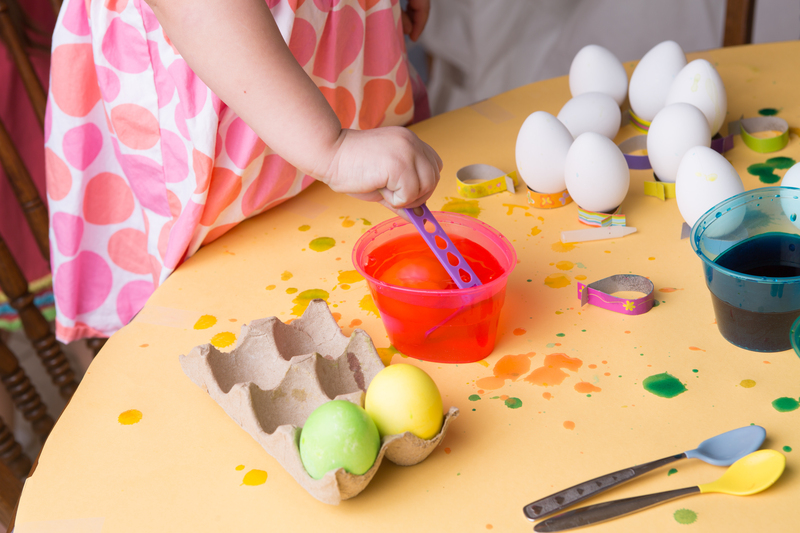Remove Damp Odors with Practical Solutions
Posted on 16/06/2025
Remove Damp Odors with Practical Solutions: An In-Depth Guide
Have you noticed musty smells lingering in your home, basement, or office? Damp odors can quickly make any environment uncomfortable and uninviting. They are often an indicator of excess moisture, hidden mold growth, or poor ventilation. Eliminating damp smells is essential not just for comfort but also for the health and well-being of everyone in the space. In this comprehensive guide, we'll explore effective and practical methods to remove damp odors and prevent them from coming back.

Understanding the Root Causes of Damp Smells
Before you start treating the symptoms, it's vital to uncover the underlying issues responsible for the unpleasant aroma. Why do our living spaces develop damp odors?
- Moisture Accumulation: Persistent dampness allows mold, mildew, and bacteria to thrive and release pungent odors.
- Poor Ventilation: Insufficient air circulation fails to dry out wet areas, enabling moisture and musty smells to linger.
- Water Intrusion: Leaks from roofs, pipes, or cracked foundations introduce extra water, fueling mold and causing persistent odor problems.
- Humidity: High indoor humidity is an ideal breeding ground for odor-causing organisms.
- Organic Materials: Carpets, furniture, drywall, and insulation retain dampness, especially when spills or floods occur.
Key Areas Susceptible to Damp Odors
- Basements and crawlspaces
- Bathrooms and laundry areas
- Attics
- Closets and storage rooms
- Under kitchen sinks or bathrooms
Assessing the Severity: Inspection Before Treatment
To completely remove musty odors, start with a thorough inspection:
- Visual Check: Look for water stains, discoloration, or bubbling paint.
- Smell: Sniff around corners, carpets, and behind furniture to locate the source.
- Mold Test Kits: Home testing kits are available to detect hidden mold colonies.
- Moisture Meters: Assess the dampness level in walls, floors, and ceilings.
Immediate Steps to Remove Damp Odors
1. Increase Ventilation
Open windows and doors when possible. Use exhaust fans in bathrooms and kitchens. Consider portable air purifiers or dehumidifiers to enhance air circulation and remove moisture.
2. Use Dehumidifiers
A dehumidifier pulls moisture from the air and is especially effective in basements and humid rooms. Set your dehumidifier at 40-50% RH for optimal results. Check and empty the reservoir regularly.
3. Absorb Excess Moisture Naturally
- Baking Soda: Place bowls of baking soda in musty areas. It absorbs odors naturally and is safe around children and pets.
- Charcoal Briquettes: Activated charcoal is excellent for pulling odors and moisture from the air.
- Silica Gel Packs: These are perfect for closets and small areas prone to dampness.
Targeted Cleaning and Deodorizing Techniques
4. Deep Clean Soft Furnishings
Carpets, curtains, and upholstered furniture trap odors and need special attention:
- Wash removable covers and drapes using hot water and a cup of vinegar (for added deodorizing power).
- Steam clean carpets. Renting a professional machine or hiring a specialist may be necessary if odors persist.
- Sprinkle baking soda over upholstery and carpeting. Let it sit for several hours before vacuuming.
5. Clean Hard Surfaces with Antimicrobial Solutions
Wipe down all surfaces using a mixture of warm water and white vinegar or a commercial antibacterial cleaner. Don't forget hidden areas like behind appliances, under sinks, and inside cupboards.
- Mix one part vinegar to three parts water for general cleaning.
- If mold is visible, use a solution of one cup bleach to one gallon of water (open windows while cleaning and never mix bleach with ammonia).
Permanent Solutions for Preventing Damp Odors
The best way to eliminate damp smells is to address the moisture source. Follow these long-term strategies:
Repair Water Leaks Promptly
- Seal foundation cracks and repair roof leaks immediately.
- Replace or repair damaged pipes under sinks, in bathrooms, and in the basement.
- Insulate exposed pipes to prevent condensation.
Improve Ventilation and Airflow
- Install or upgrade exhaust fans in kitchens and bathrooms.
- Use ceiling fans to distribute air and prevent stagnant pockets.
- Open windows regularly to allow fresh air to cycle through the space.
Waterproof Basements and Crawlspaces
- Apply waterproof sealants to walls and floors.
- Ensure downspouts direct rainwater away from your foundation.
- Install vapor barriers or a sump pump if water seepage is persistent.
Maintain the Right Indoor Humidity Level
- Keep humidity between 40-50% year-round using a reliable dehumidifier.
- Monitor moisture with a digital hygrometer.
Store Items Properly
- Avoid storing clothes, books, or papers in musty areas or directly on concrete floors.
- Use airtight containers for items in basements or attics.
Natural Products to Remove Damp Odors
For those who prefer natural odor removal solutions, many household products are effective in the fight against musty smells:
- White Vinegar: Place bowls of vinegar in the room, or spray onto mold-prone areas and wipe off after several hours.
- Lemon: A natural antibacterial, lemon slices or juice help neutralize odors on counters, tiles, and even in fridges.
- Essential Oils: Add a few drops of tea tree or eucalyptus oil to a diffuser to purify the air and leave a fresh scent.
Frequently Asked Questions: Removing Damp Smells
How can I get rid of damp smell in a room quickly?
Open windows to ventilate, run a dehumidifier, and place bowls of baking soda or activated charcoal in the area. Remove or wash any fabrics, and wipe down hard surfaces with vinegar water.
Why does my house smell musty even after cleaning?
Musty odors often linger if moisture remains in floors, carpets, walls, or furniture. Check for hidden leaks, use a dehumidifier, and repeat cleaning with products like vinegar, baking soda, or antimicrobial sprays.
Is it safe to use bleach for mold and odor removal?
It is effective for non-porous surfaces but should never be mixed with ammonia or other cleaners. Ensure good ventilation and consider gentle alternatives like vinegar for porous items or where children and pets play.
Will a dehumidifier remove the damp smell permanently?
A dehumidifier helps prevent dampness and controls odor. However, if the smell is due to existing mold or mildew, thorough cleaning and possible repairs are necessary for a lasting solution.

When to Seek Professional Help
Despite your best efforts, some persistent damp odors may require professional attention, especially if:
- Mold returns after cleaning or appears widespread.
- There are signs of structural moisture damage.
- You experience ongoing allergy or asthma symptoms indoors.
- The odor is strong, "earthy," or noticeably intensifies after rain.
Mold remediation specialists can diagnose, treat, and repair severe moisture issues, protecting your home and health.
Conclusion: Fresh, Clean Living Spaces Are Within Reach
Removing damp odors with practical solutions is both achievable and essential for a healthy indoor environment. By identifying the cause, controlling moisture and humidity, and using both natural and commercial cleaning methods, you can reclaim a fresh and welcoming home. Remember, prevention is key--always address leaks, maintain good airflow, and monitor indoor humidity to stop musty odors before they start. With these comprehensive steps, you'll enjoy lasting freshness and comfort in every room.




